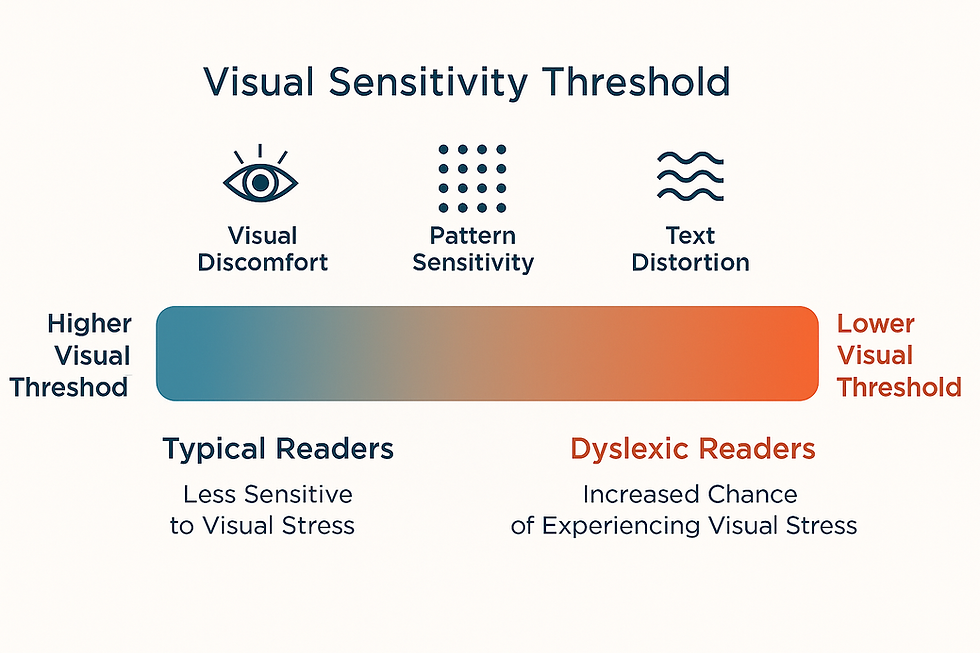Visual Stress and Dyslexia: Different conditions that often co-occur
Dyslexia and Visual Stress are not the same condition, though they often co-exist and share overlapping symptoms, especially when it comes to reading difficulties. This overlap can sometimes lead to confusion in diagnosis and treatment.
Dyslexia is a language-based learning difficulty that primarily affects skills involved in accurate and fluent word reading and spelling. It is typically associated with problems in phonological awareness, verbal memory, and verbal processing speed.
Visual Stress, on the other hand, is a perceptual processing issue involving the visual cortex. It can cause text to appear to move, shimmer, blur, or distort during reading—effects that are not caused by dyslexia. Visual Stress, sometimes misleadingly referred to as "visual dyslexia," is not a form of dyslexia, but a visual-perceptual condition. These visual distortions are not language-related and can occur in both dyslexic and non-dyslexic individuals.
However, research[3] shows that Visual Stress occurs more frequently in individuals with dyslexia than in the general population. The Rose Report (2009)[1] acknowledged that visual and sensory factors, such as Visual Stress, can exacerbate the difficulties faced by dyslexic individuals, even though they are not the root cause of the condition.
Recent advances in computer-based screening systems[5] have helped distinguish between visual-perceptual issues and phonological deficits. These systems objectively identify Visual Stress by measuring how visual processing changes under different conditions of symptom provocation.
One key finding is that the reading style of individuals with dyslexia, who often rely more heavily on visual features of text, can shift their neurological threshold, making them more likely to experience visual discomfort and distortion.

The concept of a "lower threshold" for visual comfort, rather than heightened sensitivity being a flaw, is central to understanding Visual Stress. People with this lower threshold are more likely to experience symptoms when exposed to certain lighting conditions, text patterns, or visual environments.
Precision-tinted lenses or overlays, individually prescribed, can reduce visual noise and distortions by calming hyperactivation in the visual cortex. These filters help with Visual Stress, not with dyslexia. They are not treatments for phonological or memory-based issues but can remove a visual barrier that makes reading easier and more comfortable for those affected.
Key Points Summary for Readers
-
Dyslexia is a language-based difficulty; Visual Stress is a visual-perceptual processing issue.
-
Visual Stress can cause text to move or distort, making reading uncomfortable or fatiguing
-
Individuals with dyslexia are more likely to experience Visual Stress because their reading style lowers their threshold for visual discomfort.
-
Filters can reduce visual distortions, but they do not address the phonological or memory challenges of dyslexia.


